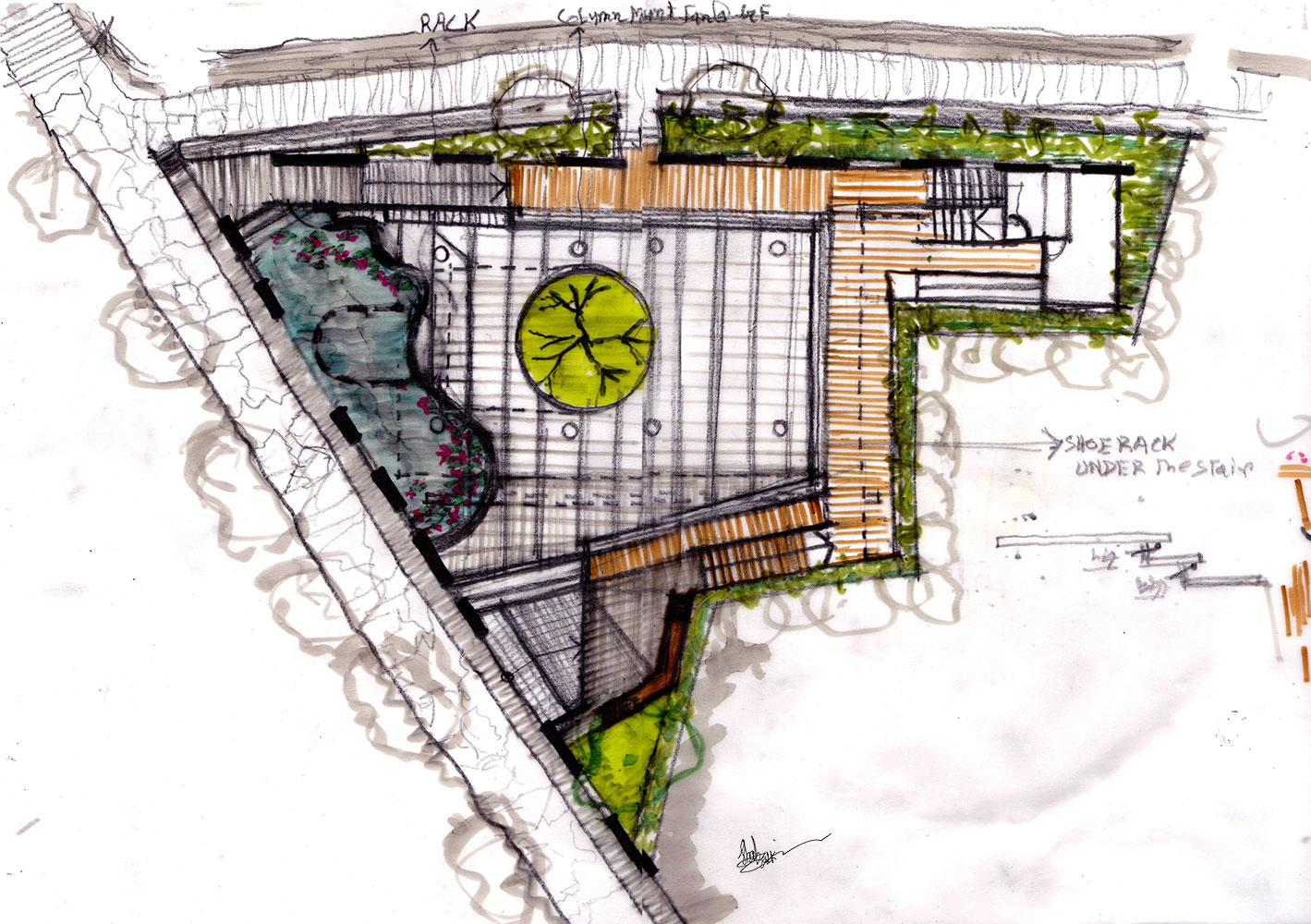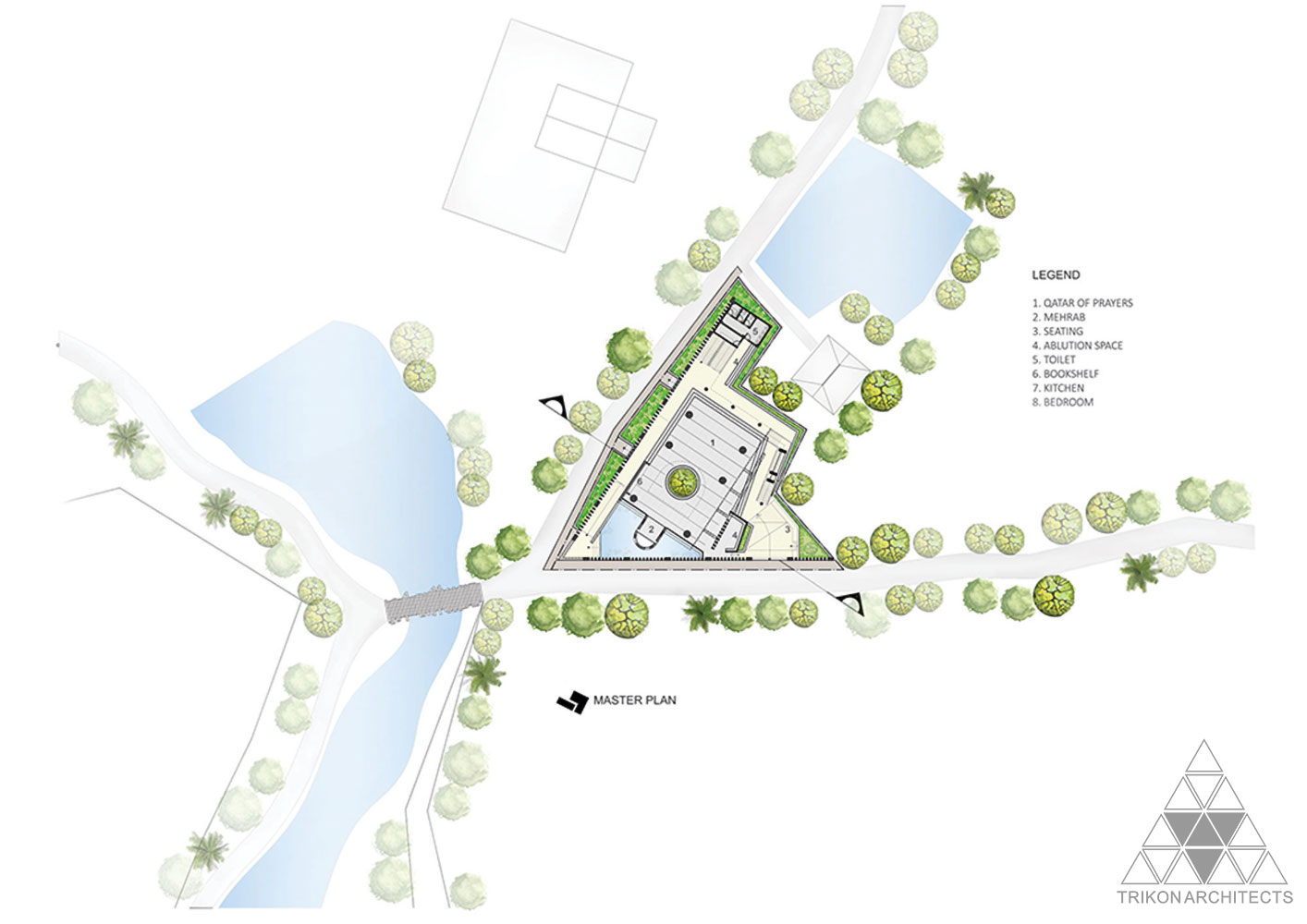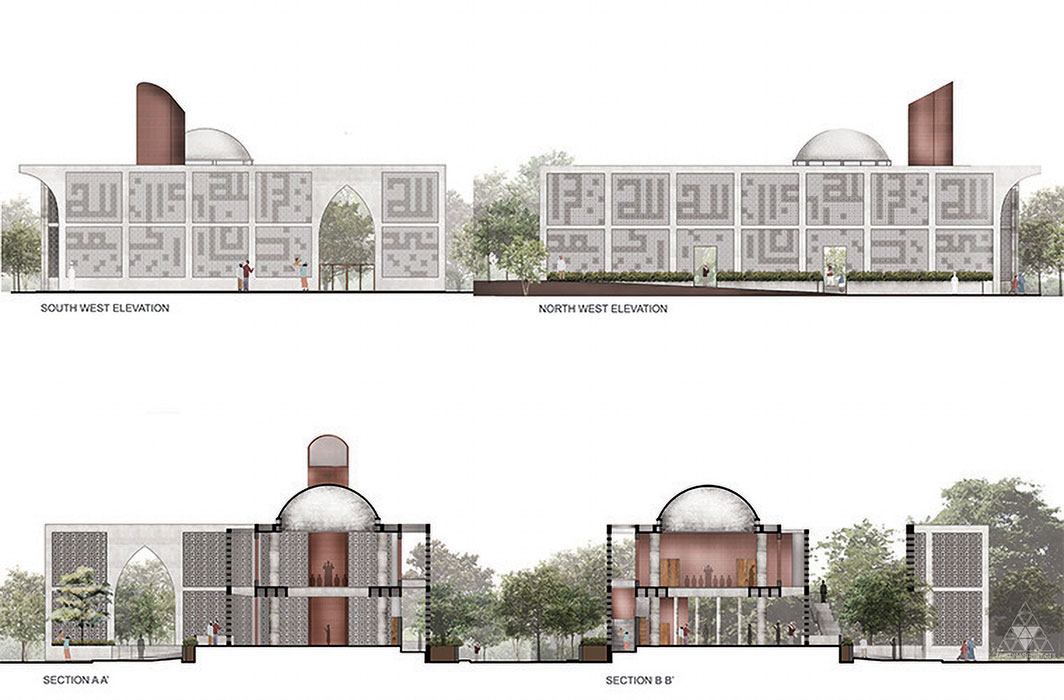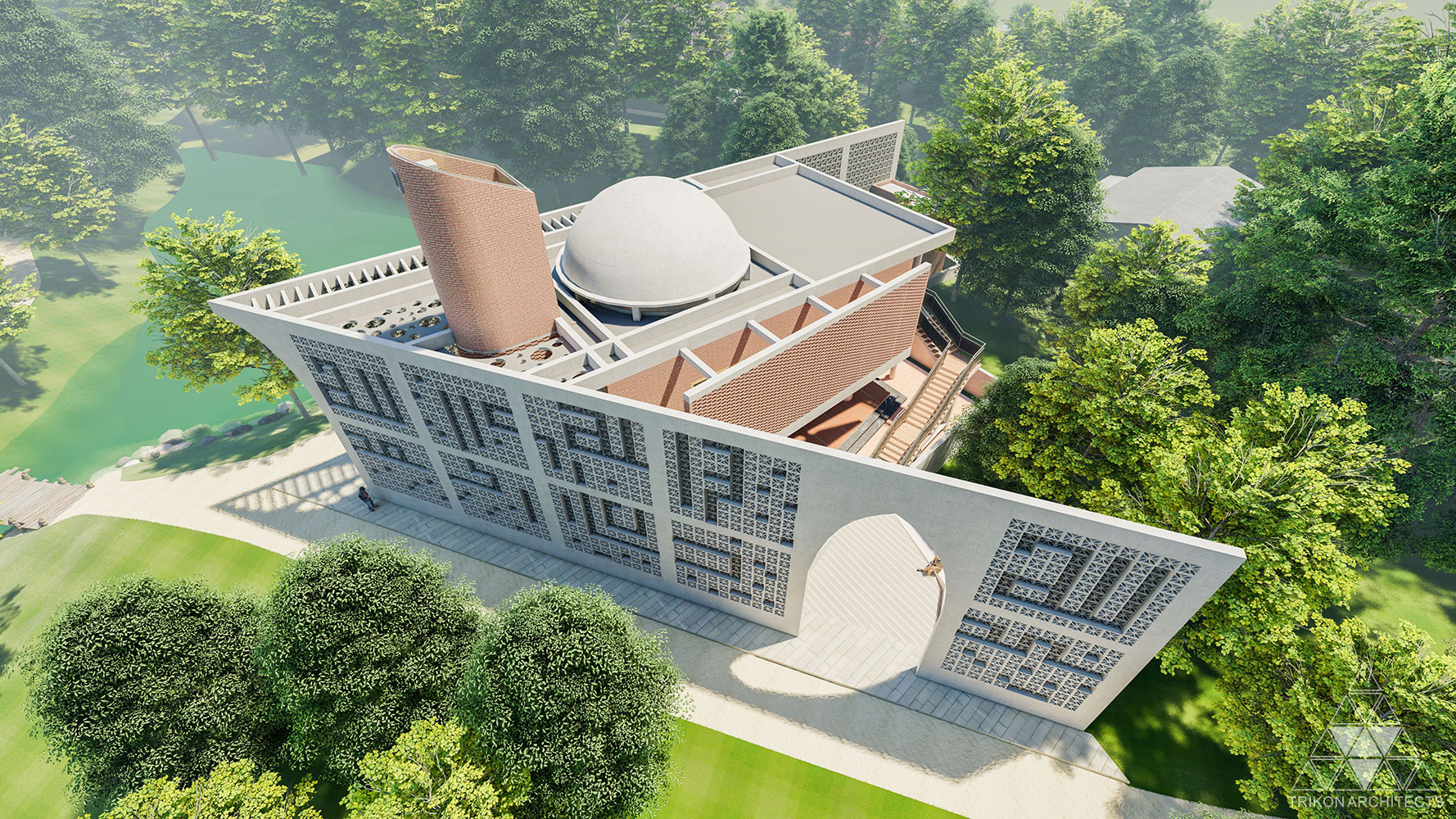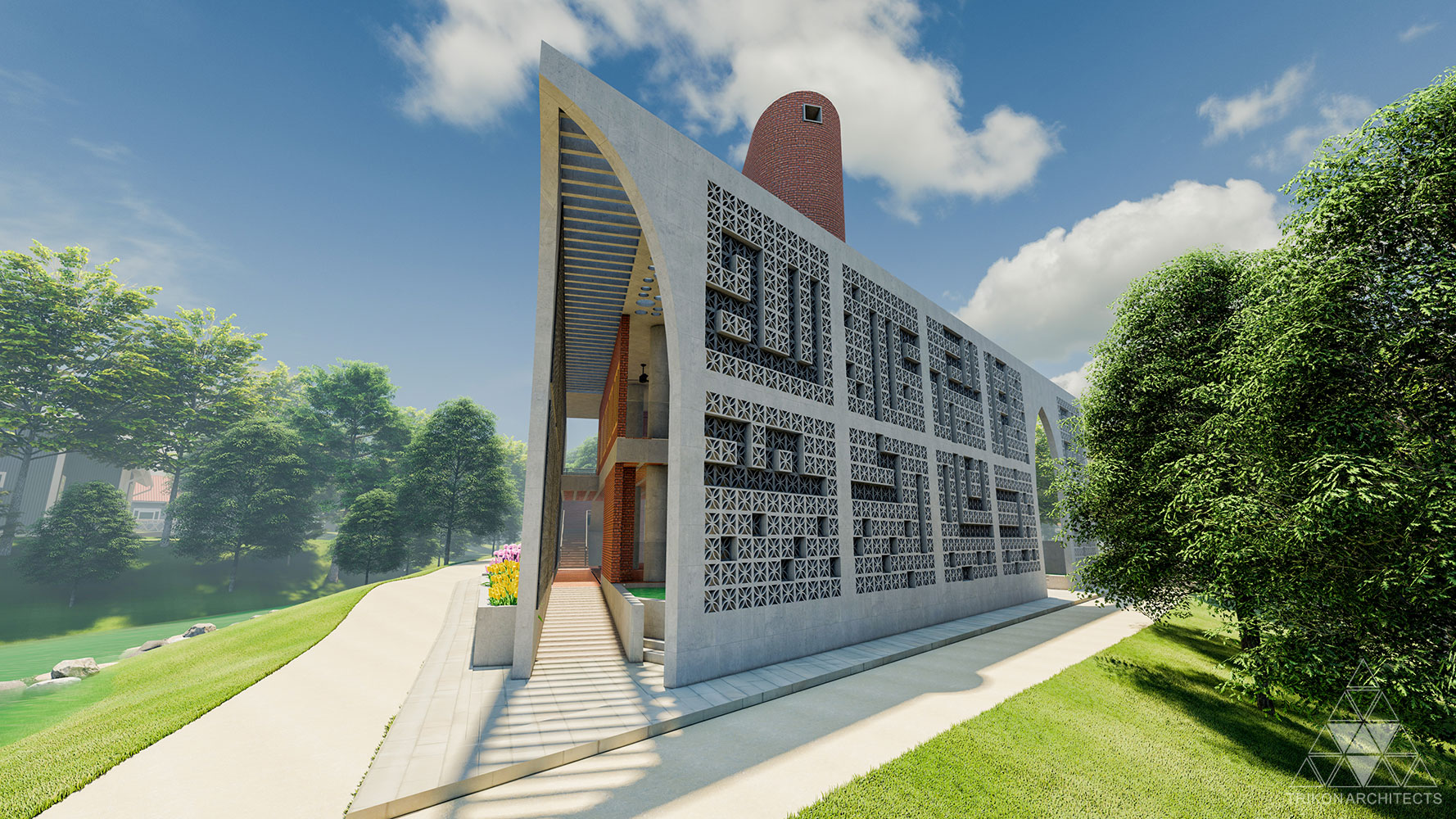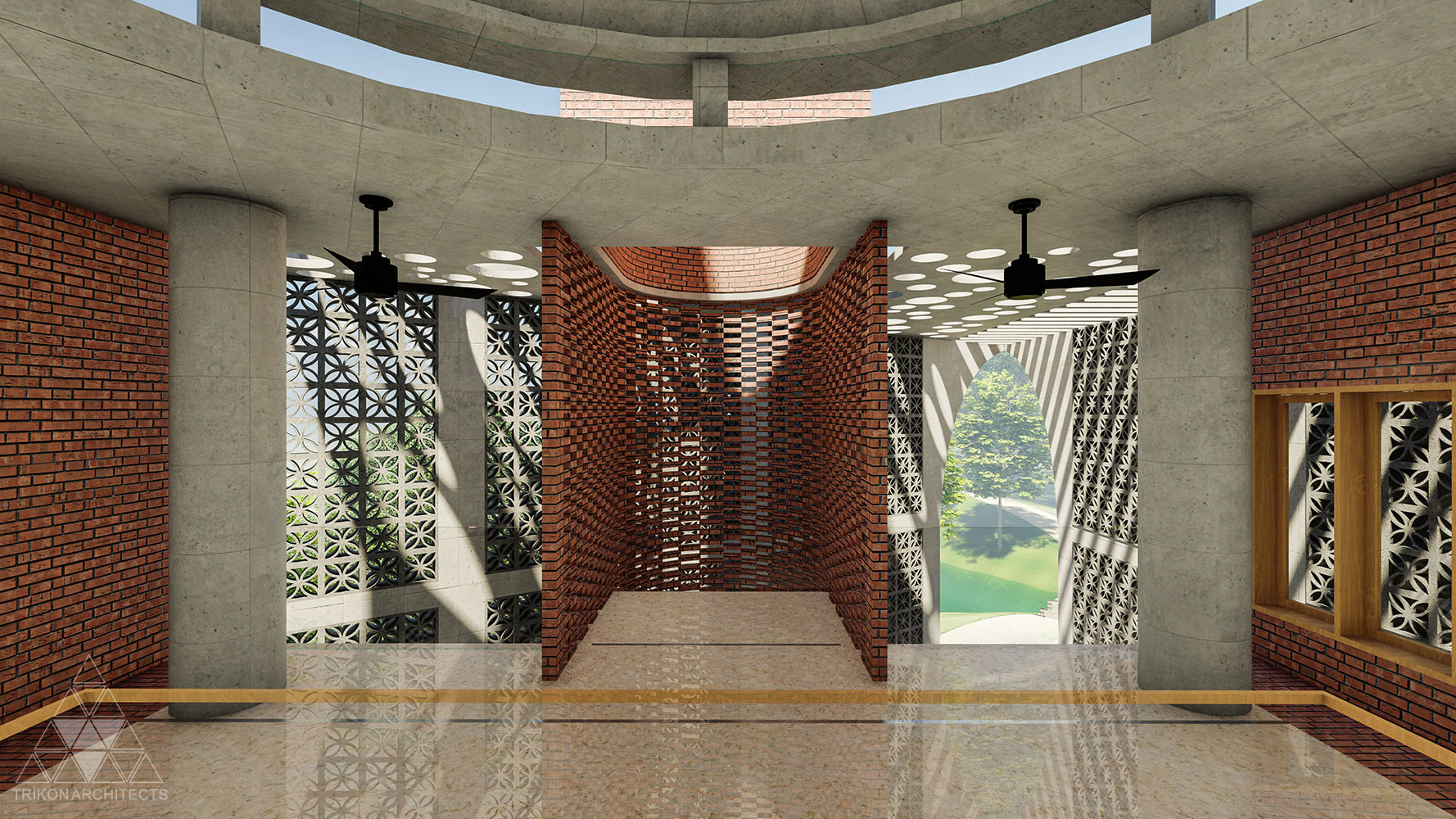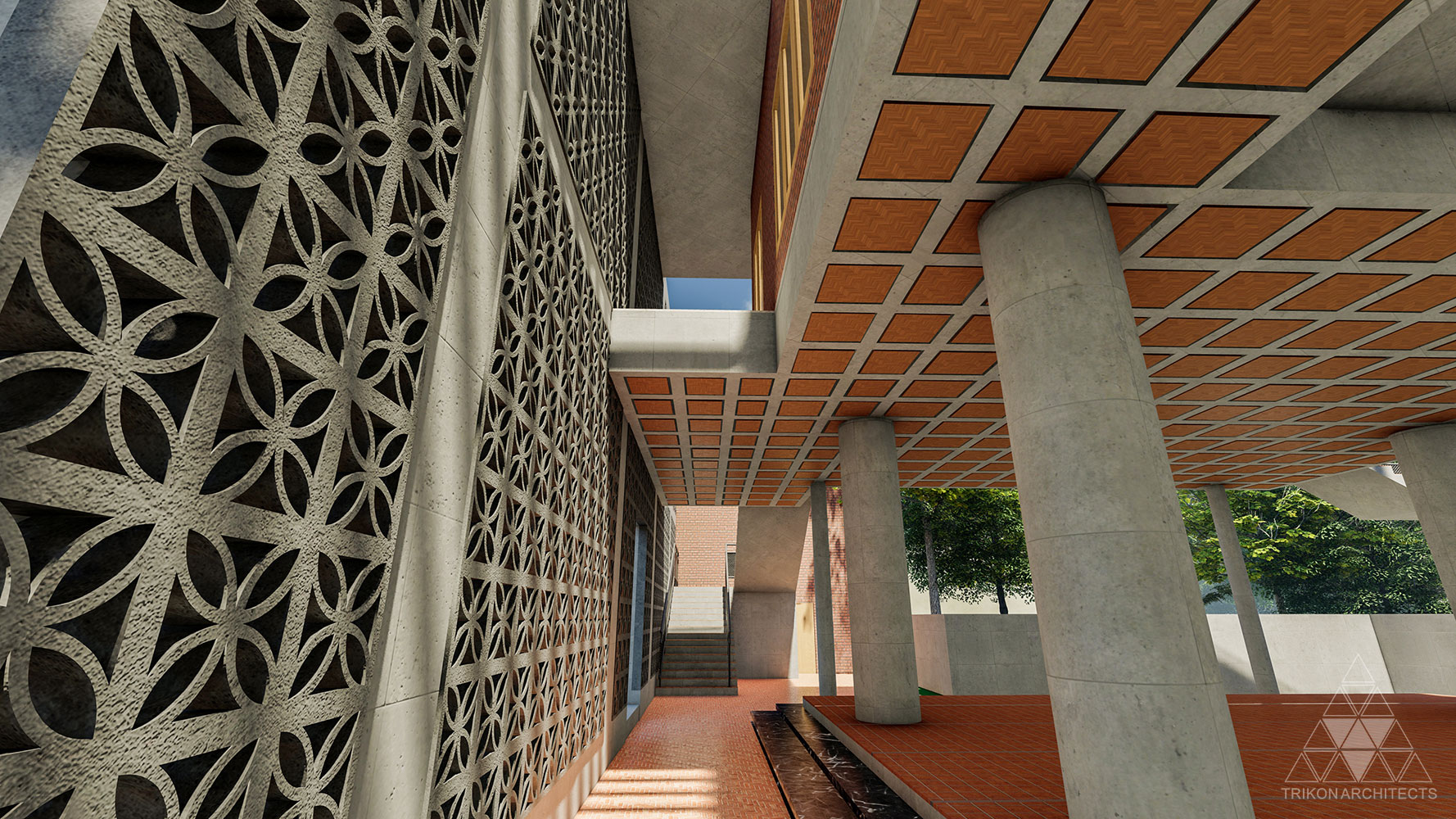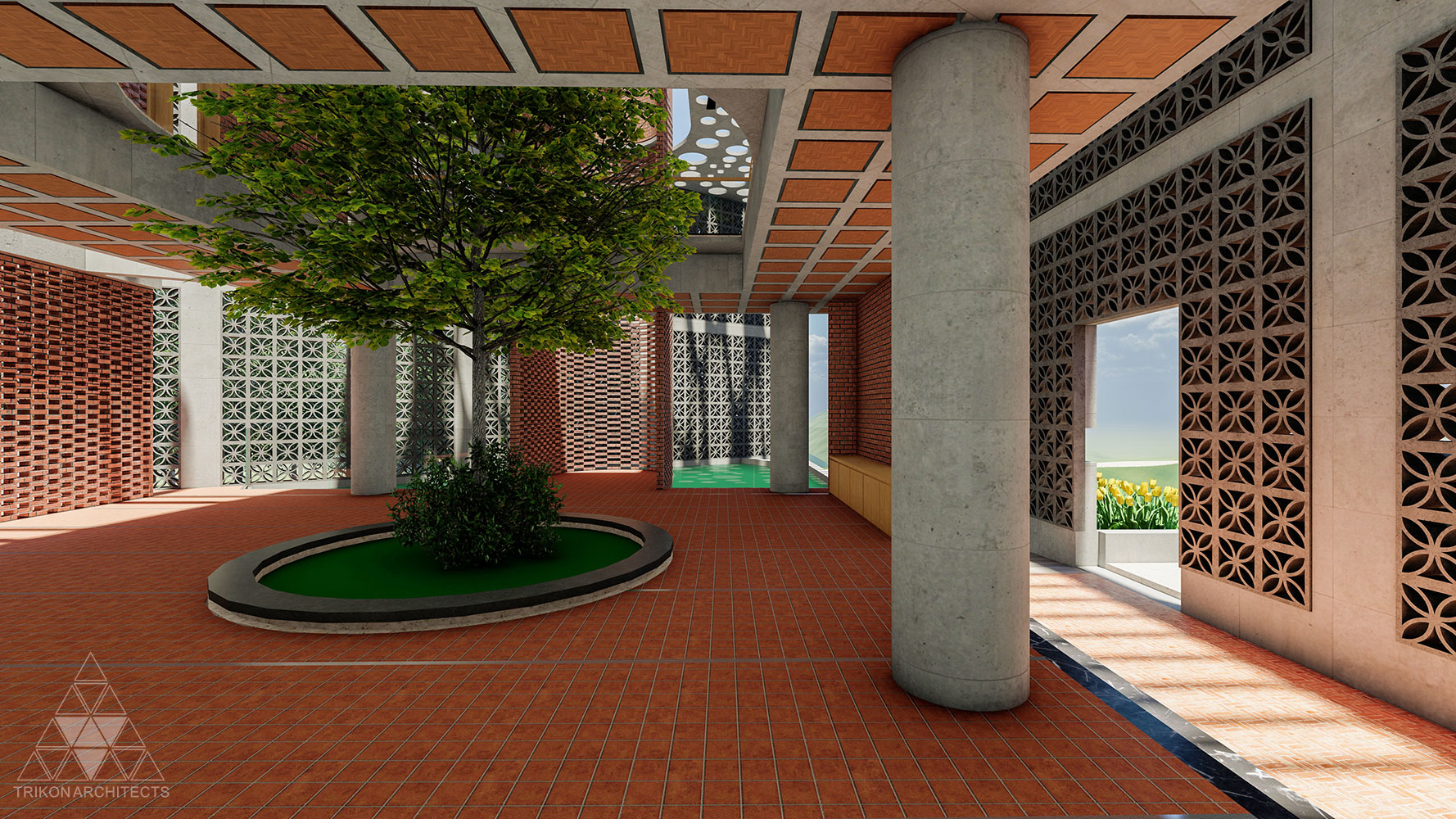Munshiganj, Dhaka/ 2020
Location: Munshiganj, Dhaka
Build Area: 6,960 sft (Approximately)
Year Designed: 2020
Principal Architect: Ar. Shafique Rahman (MIAB)
Design Team: Trikon Architects
Concept:
The proposed Arial Shahi Jameh Mosque is located in Munshiganj, about 66 km south from the central district of the capital city, Dhaka. Mosque has culturally been considered as a superior-sacred worship place for the Muslim community in Bangladesh, where 90% of the total population is Muslim by religion. The new structure opens up the area and provides improved visual connectivity, as well as physical accessibility to the surrounding community. It is designed to be inviting and to encourage people to enter and join in the activities taking place there.
Located close to the dynamic and densely populated capital city, the site still has a contrast, a profound green environmental setup attached to the marshland of Bangladeshi indigenous landscape pattern. The site reverberates the sound of native birds and the light breeze passing through the large aged canopy trees. The site itself preserves an elegant untouched ecosystem and an empty pocket-like tiny space setting surrounded by mostly vernacular homesteads. Residing attached to two peripheral earth roads, the site has a critical irregular shape. Moreover, the west side facing frontal approach makes the site substantially challenging to develop a coherent language with the local climate and the community as a mosque, and as well as a contemporary mosque which has been evolved from the historical and Islamic characteristics of the traditional mosque architecture in the context of Bangladesh.
The design approach shaped up from two major speculations - firstly, due to the compactness of the site and secondly the profound richness of the natural environment. The design thinking started to shape up from creating a large multipurpose space, which serves as a prayer space, or as the place for Islamic and ethical learning for the children of the community. However, the tight site area, along with its shape and west-ward entry made it difficult to allocate a patio, which is also widely seen as a transition space in mosque architecture in this region. To achieve this community space as the soul of the mosque, the indoor prayer space has been uplifted in the upper level and the whole ground level is designed as an open space for the multipurpose use.
A screen wall with double-layer concrete hollow block crafted the symbolism, containing calligraphic art. As an envelope to enclose the open space, the perforated screen pattern has been derived from the traditional terracotta art and calligraphy together. The highly porous form along with its perforated envelope allows seasonal wind to flow through the structure as like traditional semi-outdoor courtyard space. At the same time, the opaque form creates a see-through of the built form, preserves the amenity of the natural surroundings as it would not create an obstacle to the panoramic green vista of the site while it was empty. The open and perforated form is a sensible approach to environmentally sustainable design. Ample amount of light and interplay of wind optimizes the consumption of nonrenewable resources.
The form is porous not only from the perspective of facade but it also allows visitors to access the mosque from three different axes, making the mosque more permeable for the community. The open ground and crisscross accessibility believed to turn out the mosque as social space not only for the Muslim community but also for the other believers. The pathway through the site and the surrounded opaque façade allows everyone to observe the inner beauty of the religion and engage with religious and social activities. Apart from the design strategies of place making, an ambiance of light and shadow is achieved as an intangible quality of the space and to enlighten the indoor experience of the visitors. The interplay of light creates many variables from the perspective of the spatial quality of the design. The form also invites monsoon-rain along the edge of the calligraphic hollow facade and above the water sheet at the entrance.
The design is simply like another tree canopy in the site. It is designed to tread lightly and with minimal impact on nature and the surrounding context, becoming a unique amalgamation of nature and form. With the simplicity of the form, material and geometry, the Arial Shahi Jameh Mosque pays attention to Islamic traditions in building mosques and expresses it by the modern language.
Arial Shahi Jameh Mosque
